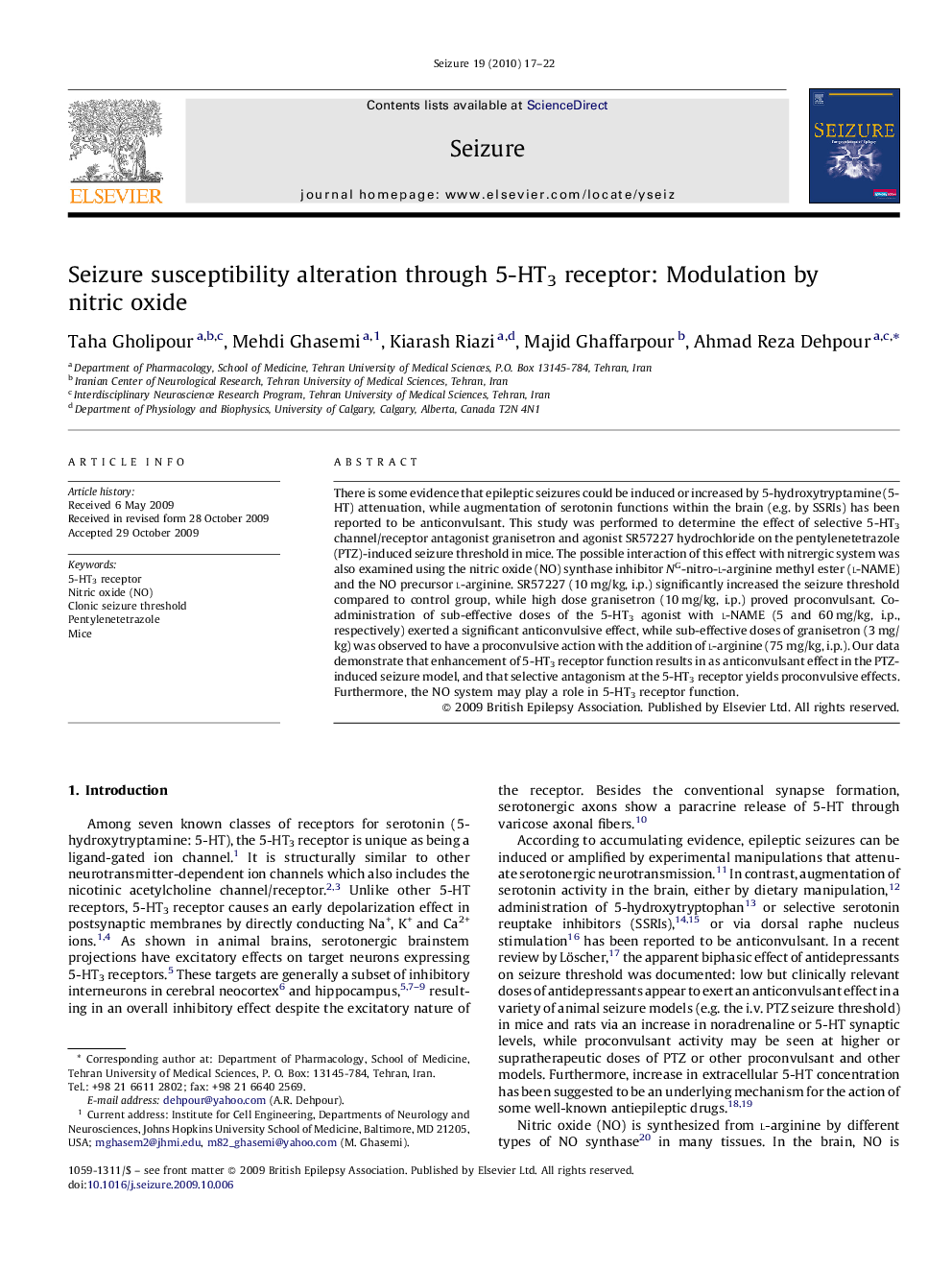| Article ID | Journal | Published Year | Pages | File Type |
|---|---|---|---|---|
| 340703 | Seizure | 2010 | 6 Pages |
There is some evidence that epileptic seizures could be induced or increased by 5-hydroxytryptamine (5-HT) attenuation, while augmentation of serotonin functions within the brain (e.g. by SSRIs) has been reported to be anticonvulsant. This study was performed to determine the effect of selective 5-HT3 channel/receptor antagonist granisetron and agonist SR57227 hydrochloride on the pentylenetetrazole (PTZ)-induced seizure threshold in mice. The possible interaction of this effect with nitrergic system was also examined using the nitric oxide (NO) synthase inhibitor NG-nitro-l-arginine methyl ester (l-NAME) and the NO precursor l-arginine. SR57227 (10 mg/kg, i.p.) significantly increased the seizure threshold compared to control group, while high dose granisetron (10 mg/kg, i.p.) proved proconvulsant. Co-administration of sub-effective doses of the 5-HT3 agonist with l-NAME (5 and 60 mg/kg, i.p., respectively) exerted a significant anticonvulsive effect, while sub-effective doses of granisetron (3 mg/kg) was observed to have a proconvulsive action with the addition of l-arginine (75 mg/kg, i.p.). Our data demonstrate that enhancement of 5-HT3 receptor function results in as anticonvulsant effect in the PTZ-induced seizure model, and that selective antagonism at the 5-HT3 receptor yields proconvulsive effects. Furthermore, the NO system may play a role in 5-HT3 receptor function.
